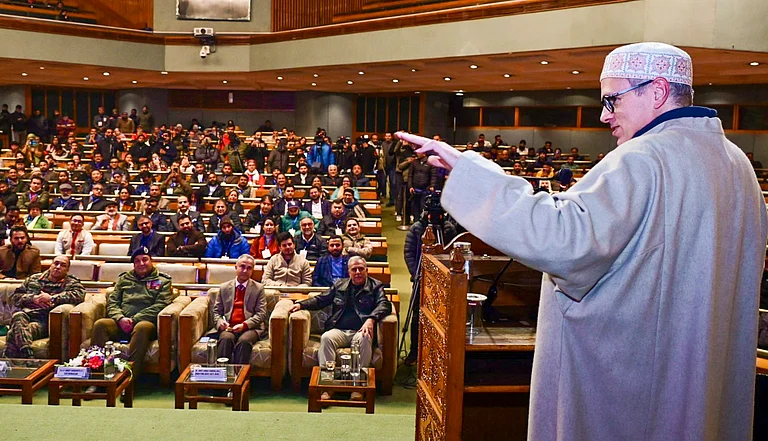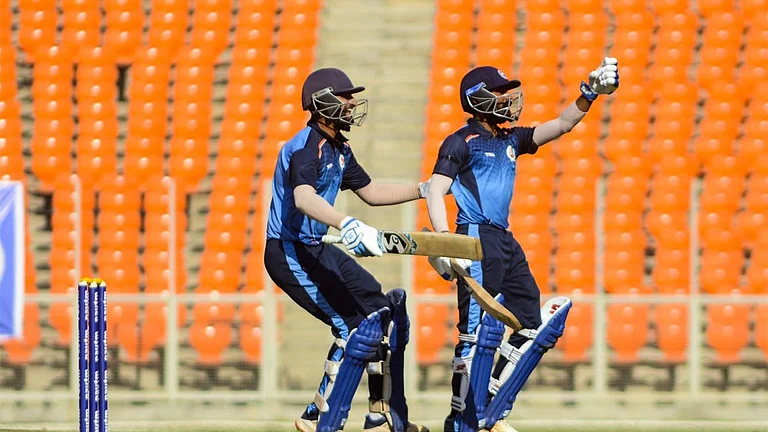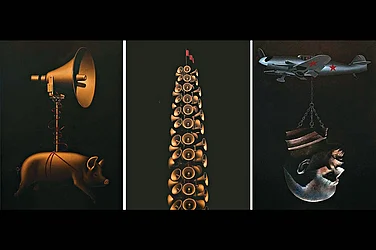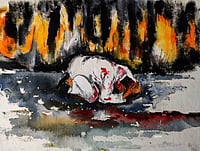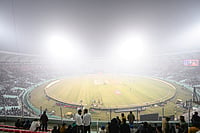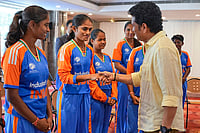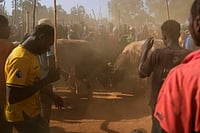When Kanti came to India from Bangladesh, his family received around five acres of forestland from the government to build a house and start farming. Kanti, a resident of Betul district in Madhya Pradesh, confirms that it took him and other families several years just to understand the land before they were able to start farming. As Bangladeshi farmers, they mostly knew only how to cultivate rice, which requires sufficient water and fertile ground to sow rice grains, but what they received was just forested land. Ashish, son of Kanti, recalls that his father secured a job while staying at the rehabilitation camp. He remembers his father narrating the stories of getting only wheat grains from the ration shop of the government. As Bengalis, they desperately craved for rice, so when they brought flour from the refinery, they used to boil it in water and have it as a substitute. Today, Kanti, who is a retired tailor by profession, remembers his camp days in Madhya Pradesh not as a bad dream, but as a harsh reality that had transformed his life forever.
The UNHCR states that forced displacement occurs “when individuals and communities have been forced or obliged to flee or to leave their homes to avoid the effects of events such as armed conflict, generalised violence, human rights abuses, natural or man-made disasters, and/or development projects. The defining factor is the absence of will or consent”. The absence of will or consent also marks the crucial difference between forced displacement and migration and refugees and migrants. A refugee is potentially in danger and is often in no position to return to his/her country. However, migrants have the choice to return, but they do not do so for reasons included in the legal definition of a refugee. The elaborate legalities attached to being a refugee further complicate the access to the UNHCR blue card that legitimises one’s status as a refugee. Thus the lives of refugees remain shrouded in uncertainty. In many cases, after the UNHCR has provided the refugees with the initial relief and rehabilitation, host countries have the choice to accommodate and amalgamate refugees into their country. While some host nations are successful, many fail to create a safe, lawful and holistic environment for the refugees. Due to uncertainty, absence of concrete refugee policies and lack of basic human rights in the host country, the refugees are caught in the loop of remembering and forgetting the trauma and experiences of displacement. The haunting yet vivid memories of their motherland affect their identity as an individual and as a community, often leading to the transfer of the traumatic memory to the next generations.
Bhushon, who currently lives in Krishnagar, West Bengal, arrived in India before the Liberation War. Bhushon, who had his relatives in Shantipur, recalls that his father had to sign a declaration that mentioned he would never return to East Pakistan. He says that the communal riots forced them to leave their homes in Mymensingh—located in former East Pakistan—and move towards West Bengal in India. Unlike the western border of India, the migrations continued across the eastern border even after the Partition of 1947, and intensified after the 1971 Bangladesh War of Liberation. When Bangladesh fought for independence in 1971, millions of east Bengalis sought refuge in West Bengal. Debjani Sengupta writes, “This displacement of a whole people cutting across class and caste, followed by rehabilitation or resettlement in a new place, forms one of the important social and cultural processes we see in the post-Partition years in West Bengal.”
However, it became impossible to rehabilitate the teeming refugees in the already overcrowded spaces of West Bengal and the Northeastern states of India. Bhushon and his family were lucky to have found their space in Bengal, as did many who came before the 1971 war, but those people who came after the 1971 war were not as fortunate. The refugees, who had hoped for rehabilitation in Bengal, were instead resettled in the neghbouring states of Orissa and Madhya Pradesh, where rehabilitation camps were set up in Dandakaranya and Mana. But the plan encountered several hurdles as the east Bengali refugees struggled to survive in unknown and sometimes inhospitable territories in those regions. At the same time, their lives became entwined in class, caste and communal conflicts. Unable to withstand the worsening conditions of the rehabilitation camps and the government’s ignorance in addressing the same, the east Bengali migrants desperately wanted to move to West Bengal. They believed living in West Bengal would allow them to reclaim their identity and they would be united with their community. The refugees did move to West Bengal, only to be ousted and sent back to their camps and being displaced again.
When Kanti was asked, “Why move, despite the facilities and a job?” he replied coyly in Bangla, “motibhrom”, which translates as delusion. His son Ashish says he could never understand why his father moved to West Bengal from Madhya Pradesh. Today, he feels that Madhya Pradesh has given him more opportunities, but he stresses that he can’t go a day without the quintessential Bengali Mach-Bhat (fish and rice) and neither can his father. For Ashish, the memory of his homeland is where his father chose to reside, and the memory of the culture is what his father inculcated in him.
Children sometimes inherit the trauma passed on by their ancestors and, albeit unknowingly, implicating themselves in the repercussions of events they never witnessed and form memories that are hardly their own. However, the outcome of witnessing a traumatic event might also result in the next generation of survivors sharing their version of the inherited memories to the world and thus giving them the necessary exposure while carving out closure for themselves. Marianne Hirsch, in her book Generation of Postmemory, describes post-memory as the relationship that the “generation-after” bears to the personal, collective, and the cultural trauma of those who came before—to experiences they ‘remember’ only through the stories, images, and behaviours among which they grew up. Therefore, the ‘post’ in the post-memory doesn’t mean the end of the previous memory, but rather signifies continuity in the representation of the past and the influence of memory in the present.
Not all traumatic experiences and memories lead to something destructive. Memories and post-memories of the surviving generations become essential to remember events of forced displacements, state-sponsored violence, and mass murders, which would have otherwise slipped into oblivion or encountered denial. If inherited trauma and traumatic memories of forced displacement are a part of the post-memory experience, the trans-generational nature of memory lies in constructing suitable explanations for self-recovery. The east Bengali refugees, now respectable Indian citizens like Bhushon and Kanti, still long to see their bhite or home that they left behind in Bangladesh. But most importantly, they also wish to show their children the land and the people that they identified as ‘home’.
(Note: Names of people have been changed to maintain anonymity)
(Views expressed are personal)
(This appeared in the print as 'Forced Displacement')
Pratiti Roy is a senior research fellow, Indian Institute of Science Education and Research, Bhopal








